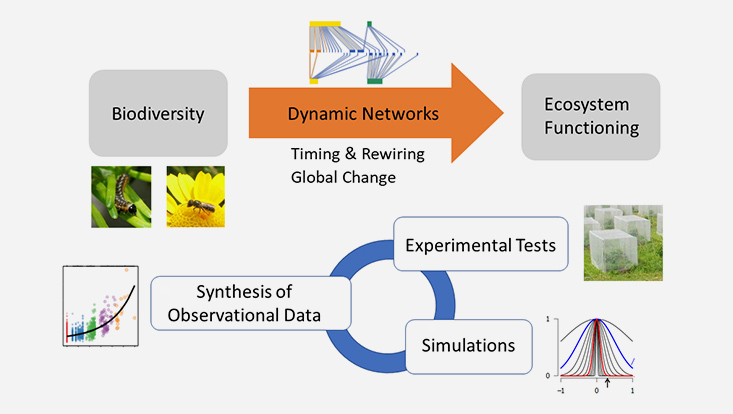Research
The organisation of biotic interactions (competition, predation, herbivory, pollination, etc.) in networks is also known as the "architecture of biodiversity". Biotic interactions are crucial for the development and maintenance of the enormous diversity of species found on earth (there are well over a million species of insects alone). Biotic interactions also determine the functional significance of living organisms for other living organisms, and thus their significance for ecosystems and humans.

My research seeks to understand these interactions in the context of biodiversity. Due to the multitude of interactions of each individual species, complex networks quickly emerge, the understanding of which is still a challenge for (ecological) research. I approach this challenge with a combination of different methodological approaches.
My research to date is essentially based on three areas:
Across all three areas, I pay particular attention to temporal dynamics, which have often been ignored in previous studies. Temporal dynamics here refers to the change in interactions and species communities on a wide range of time scales, from the course of the day to outbreak cycles and global change. Another central, cross-cutting question is the functional significance of species diversity (biodiversity) in the ecosystem. I use the network perspective to develop a mechanistic understanding of both the significance of individual species (groups) for the whole and the significance of overall diversity for individual species.



